
by Isabel Kaye
Norland Nanny
The festive season is often painted as a picture of sparkling lights, joyful laughter and magical moments. Yet for many families, the reality is a little different: overtired children, disrupted routines and parents pulled in ten different directions at once. As a Norland-trained nanny, I’ve spent years supporting families through this wonderful but sometimes overwhelming time of year. With a little planning and a few simple strategies, it’s possible to enjoy a Christmas that feels calm, connected and truly memorable.
1. Hold on to the pillars of routine
Children thrive on predictability and during the holidays it’s easy for regular rhythms to disappear. While flexibility is important, keeping a few daily routines makes a huge difference. Bedtime doesn’t always have to be 7pm sharp, but maintaining the ritual of a bedtime story or bath signals security. At mealtimes, your little ones will benefit from consistency especially for younger children, who struggle when they become too hungry amidst the excitement. A familiar routine helps children feel safe, which in turn keeps festive spirits high.
2. Create calm corners
Festive environments are often filled with noise, bright lights and constant stimulation. While this can feel magical, it can also be overwhelming. I often suggest families set up a cosy ‘calm corner’. Create a small space with a blanket, some cushions and a few books or soft toys. This gives children a retreat when things become too much, a quiet spot to regulate emotions before they feel overwhelmed emotionally. Even five minutes of calm space can help them regulate.
3. Keep expectations realistic
Parents often feel pressure for everything to be picture-perfect – the Instagram-worthy tree, matching pyjamas, smiling children on Christmas morning. The reality rarely looks like the advert. Children may be unsettled by unfamiliar relatives, overstimulated by too many gifts, or simply overtired. Setting realistic expectations is the kindest thing you can do for your family. Focus on connection rather than perfection: one joyful moment shared together is worth far more than a forced photo.
4. Share the load
In many households, one parent ends up carrying the emotional and practical weight of the season. As a nanny, I’ve seen how quickly burnout creeps in. Delegation is key – whether that means involving children in setting the table, asking visiting relatives to help with washing up, or ordering food pre-prepared instead of cooking everything from scratch. Children actually love being part of the process – giving them little jobs not only keeps them engaged but also teaches responsibility.
5. Plan ’empty space’ Into the calendar
It’s tempting to say yes to every festive activity like the markets, the pantomime, the carol concert and the Christmas party. But a jam-packed calendar can tip children (and parents) into exhaustion. I recommend leaving deliberate ‘free space’ days in December. These quieter days give families breathing room to reset, whether that’s a pyjama morning at home, a gentle walk or simply a chance to play without schedule. Rest builds resilience and resilience makes the festivities far more enjoyable.
6. Keep traditions simple and meaningful
Traditions are the heartbeat of Christmas, but they don’t need to be elaborate or expensive. In the families I’ve supported, the most treasured memories are often the simplest: baking biscuits together, wearing matching pyjamas or reading the same festive story year after year. Children value repetition, familiarity and shared time more than grandeur. Choose a handful of meaningful traditions and let go of the rest.
7. Care for yourself
Calm is contagious. Children pick up quickly on the mood of their caregivers, so if parents are running on empty, little ones will feel unsettled. Taking care of yourself is not indulgent, it’s essential. Whether it’s a short walk alone, a bath with a book, or simply saying “no” to one extra event, prioritising your own calm helps the whole household. As I often remind parents: you cannot pour from an empty cup.
8. Finally, remember the magic is in the moments
At its core, the festive season isn’t about perfectly wrapped gifts or a flawless roast dinner. It’s about connection, presence and love. When I work with families at Christmas, my role is often to bring the focus back to what really matters: slowing down, savouring small moments and allowing children to experience the magic without pressure. The memories that last are the giggles during a board game, the flour on the kitchen floor after baking cookies or the Christmas story by fairy light.
Isabel Kaye is a Norland-trained nanny based in Bath. She has over 10 years’ experience supporting families with children from newborns to teens, and specialises in helping parents create calm, joyful environments, whether at home, at weddings or while travelling.

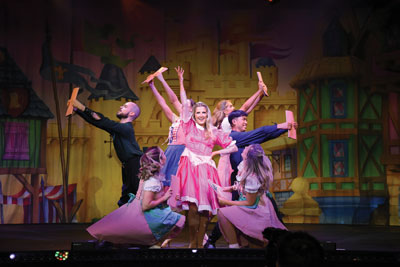
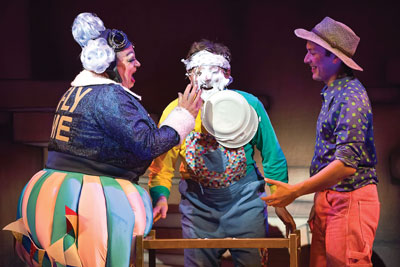

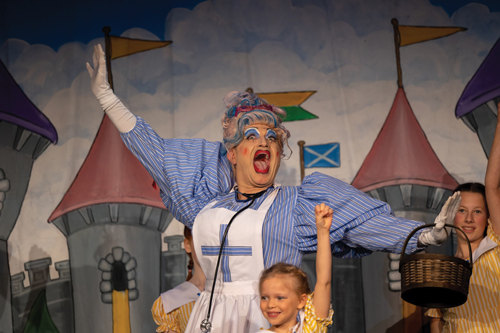
 It starts the minute you arrive at the venue. The staff and volunteers all have bright eyes and wide grins that actually look genuine, the café or kiosk is serving Christmas-themed cookies and cupcakes and Christmas pudding flavoured ice-cream. The bar is serving large glasses of everything, including delicious mulled wine. The smell of excited anticipation is everywhere.
It starts the minute you arrive at the venue. The staff and volunteers all have bright eyes and wide grins that actually look genuine, the café or kiosk is serving Christmas-themed cookies and cupcakes and Christmas pudding flavoured ice-cream. The bar is serving large glasses of everything, including delicious mulled wine. The smell of excited anticipation is everywhere.
 gular physical activity also has links to increased happiness, as well as giving children more opportunities to make friends and social connections.
gular physical activity also has links to increased happiness, as well as giving children more opportunities to make friends and social connections.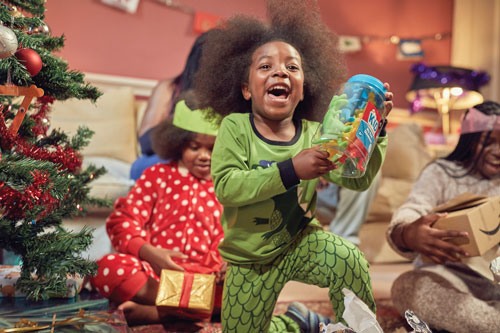

 If every opportunity is seized, there is wonderful scope for creating a powerful cross-curricular approach to developing a show. By learning about the literature, history, art, music, and dance that surrounds a story, we cultivate an appreciation for traditions, beliefs, design and stagecraft. As part of the preparations for our school’s recent production of The Lion King this term, the girls studied the patterns, designs and colours used in African prints before creating their own designs for fabrics, masks and marketing materials. They studied each character in the script and crafted symbols and emblems to represent them; meticulously forming links between characters who were related or belonged to the same group. Later, these were hand printed onto fabrics using block printing techniques so that they could finally be made into the cast’s costumes. Through workshops with external educators, they learnt about the importance and significance of symbolism in Adinkra printing; the rhythms and collective energy used in African drumming; and the storytelling techniques, as well as traditional movements, that can be generated through dance. We focused on the importance of recycling materials and made masks and props out of plastic milk bottles. This process was amazing – our girls were captivated by the transformation achieved with these simple objects. In addition to this, by singing songs in African dialects, we enhanced our understanding and appreciation of sounds and languages. The opportunities for extending the students’ learning through stimulating and interlinked topics are boundless.
If every opportunity is seized, there is wonderful scope for creating a powerful cross-curricular approach to developing a show. By learning about the literature, history, art, music, and dance that surrounds a story, we cultivate an appreciation for traditions, beliefs, design and stagecraft. As part of the preparations for our school’s recent production of The Lion King this term, the girls studied the patterns, designs and colours used in African prints before creating their own designs for fabrics, masks and marketing materials. They studied each character in the script and crafted symbols and emblems to represent them; meticulously forming links between characters who were related or belonged to the same group. Later, these were hand printed onto fabrics using block printing techniques so that they could finally be made into the cast’s costumes. Through workshops with external educators, they learnt about the importance and significance of symbolism in Adinkra printing; the rhythms and collective energy used in African drumming; and the storytelling techniques, as well as traditional movements, that can be generated through dance. We focused on the importance of recycling materials and made masks and props out of plastic milk bottles. This process was amazing – our girls were captivated by the transformation achieved with these simple objects. In addition to this, by singing songs in African dialects, we enhanced our understanding and appreciation of sounds and languages. The opportunities for extending the students’ learning through stimulating and interlinked topics are boundless.
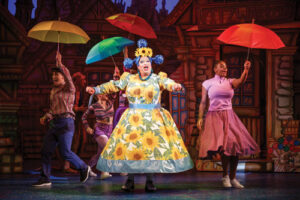 Children’s empathy and emotional intelligence are developed through everyday interaction but they are also nurtured by music, books, and in particular, watching live theatre performances. When watching characters interact on stage, we as the audience connect with them and experience what they are thinking and feeling as if we were thinking or feeling it ourselves – we are practicing how to understand others. Having a safe space to explore difficult emotions is essential to strengthening empathetic muscles and live theatre provides the perfect platform for this. Bill English, founder of the San Francisco Playhouse, states that: “Theatre is like a gym for empathy. It’s where we go to build up the muscles of compassion, to practice listening and understanding and engaging with people that are not just like ourselves. We practice sitting down, paying attention and learning from other people’s actions. We practice caring.”
Children’s empathy and emotional intelligence are developed through everyday interaction but they are also nurtured by music, books, and in particular, watching live theatre performances. When watching characters interact on stage, we as the audience connect with them and experience what they are thinking and feeling as if we were thinking or feeling it ourselves – we are practicing how to understand others. Having a safe space to explore difficult emotions is essential to strengthening empathetic muscles and live theatre provides the perfect platform for this. Bill English, founder of the San Francisco Playhouse, states that: “Theatre is like a gym for empathy. It’s where we go to build up the muscles of compassion, to practice listening and understanding and engaging with people that are not just like ourselves. We practice sitting down, paying attention and learning from other people’s actions. We practice caring.” to the theatre can be a fantastic way of making lasting memories and spending real quality time together. For children (and grownups!) going to see a play feels like something special, something out of the ordinary. Whether it’s the grandeur of the building itself, finding your red velvet seats or begging for a tub of ice cream in the intermission, the experience of going to the theatre is something unique before the play has even begun.
to the theatre can be a fantastic way of making lasting memories and spending real quality time together. For children (and grownups!) going to see a play feels like something special, something out of the ordinary. Whether it’s the grandeur of the building itself, finding your red velvet seats or begging for a tub of ice cream in the intermission, the experience of going to the theatre is something unique before the play has even begun.










